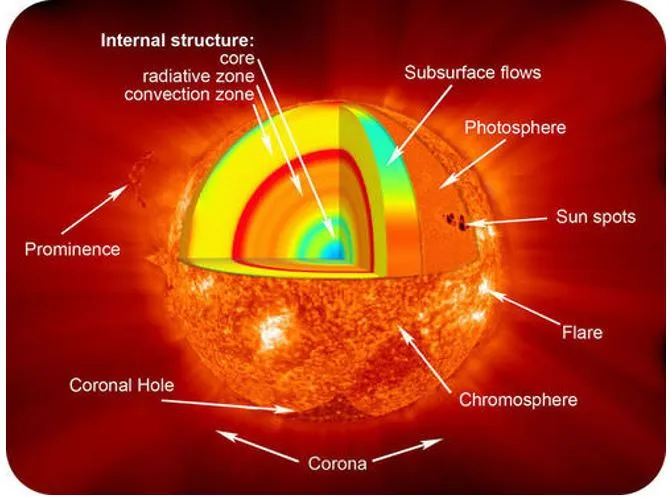

2nd May 2025 (10 Topics)
Context
A team of international scientists, including researchers from India, has discovered giant plasma tides beneath the surface of the Sun.
Key Findings:
- Discovery of Plasma Tides: Massive waves of hot plasma, like ocean tides, have been found in a turbulent region beneath the Sun's surface called the Near-Surface Shear Layer (NSSL).
- These plasma flows occur about 35,000 km below the Sun’s surface.
- The tides are closely linked to the Sun’s 11-year magnetic cycle, which controls sunspots and solar flares.
- The finding challenges older beliefs that solar magnetic fields come from deep within the Sun. They may instead form closer to the surface.
- Better Space Weather Forecasting: Understanding these internal flows could help scientists predict solar storms more accurately and protect Earth’s tech infrastructure.
About Sun
 |
More Articles

